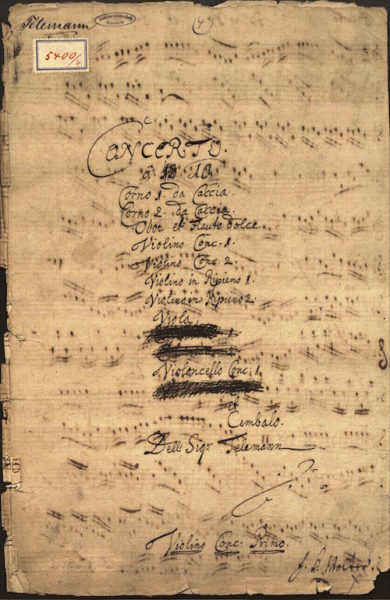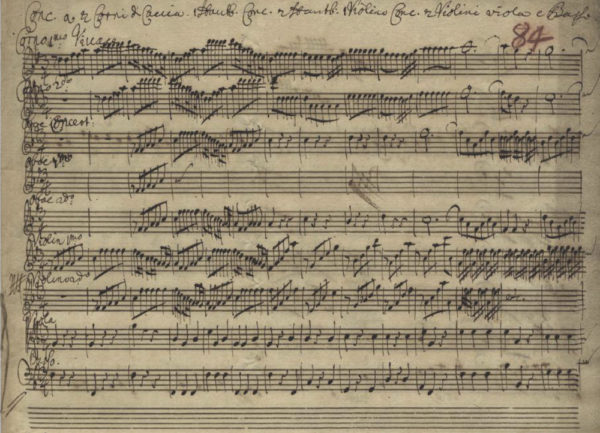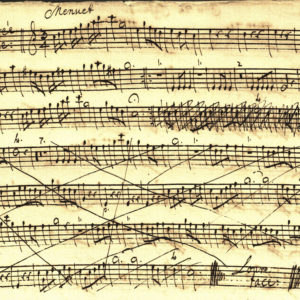One of the two concertos in our Fire and Invention orchestral program might be my favorite orchestral work by Telemann. And that said, I love both. But the one I’m talking about, a concerto for multiple instruments, became my favorite for its first movement, a concerto along the lines of Bach’s Brandenburg 1, except an oboe takes the spotlight as first-among-equals rather than piccolo violin.
The concerto survives in two different versions, neither in Telemann’s hand, with different instrumentations, and some entirely different movements. One of them is in Schwerin, Germany, a set of part books, and the other is in Dresden, Germany, a score in the hand of Dresden concertmaster Johann Georg Pisendel and a set of part books based on it.

The Schwerin version seems to have had its orchestration changed on the fly. A bourée that looks like it was mean to feature a pair of cellos had one of the celli reassigned to bassoon. The title page shows that there were to have been two clarinets in this concerto, but they were cut from the Schwerin version and their part books are missing from the set.
The Dresden version replaces Schwerin’s 2nd movement solo recorder with oboe. The melody in the Loure for cello in Schwerin goes to bassoon in Dresden. Dresden has two additional oboes that play non-soloist roles. These might well be the same music that the clarinets were assigned that was struck from Schwerin. The Dresden version also dispenses with the bourées that Schwerin has.

In the absence of any authoritative autograph score for this concerto, the performer has some leeway in how to assemble the concerto, choosing some from column A and some from column B according to the ensemble at hand. We have kept all the movements between the two versions, retained Schwerin’s solo recorder for the second movement, reassigned the 2nd solo cello to the bourées, and chosen Dresden’s solo bassoon version for the loure.

But the thing that caught my attention this time that I had no idea about before is that Schwerin once had a second minuet that Dresden omits. The modern edition that we’d originally consulted back in 2009 doesn’t show this, but the Schwerin horn books have the second minuet music, though it’s crossed out. The other instruments in this movement had to be the two clarinets, whose parts are missing. The library at Schwerin sent me images of their set of part books. Using the horn books, I was able to figure out what the underlying notes were and then reconstruct the clarinet parts. For Tempesta di Mare, I followed the cue of the Dresden version and reassigned the clarinet music to the oboes. So now we have a second minuet for two horns and two oboes. Prepare to be charmed.
